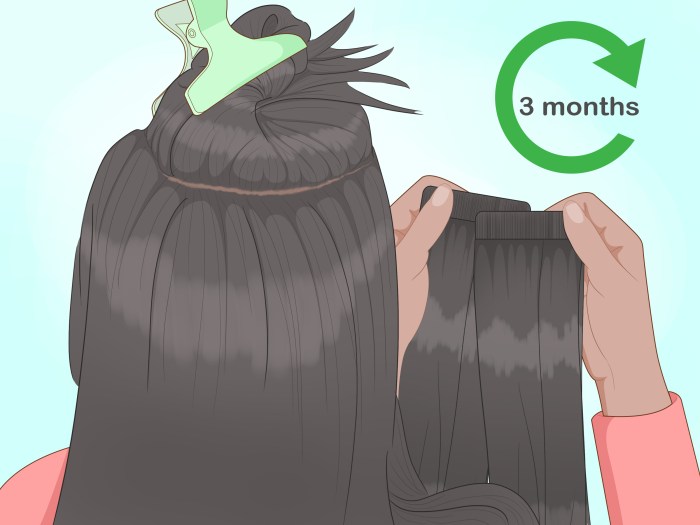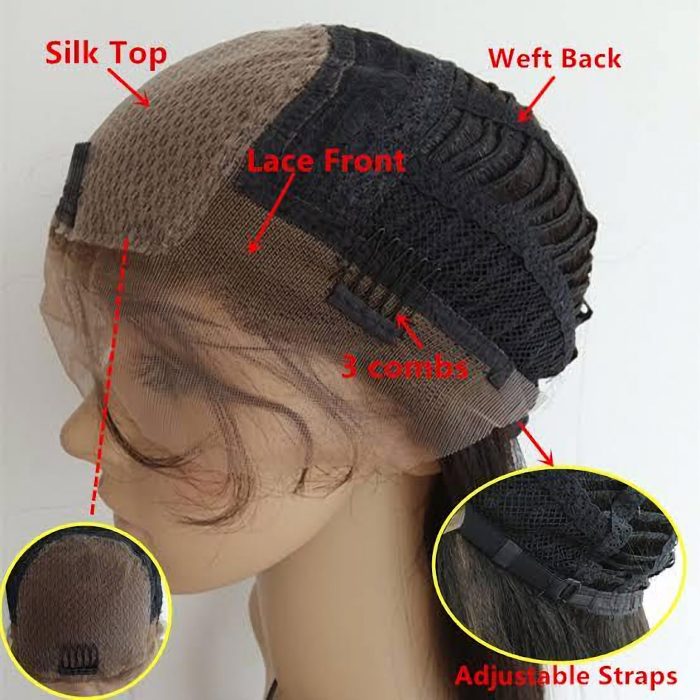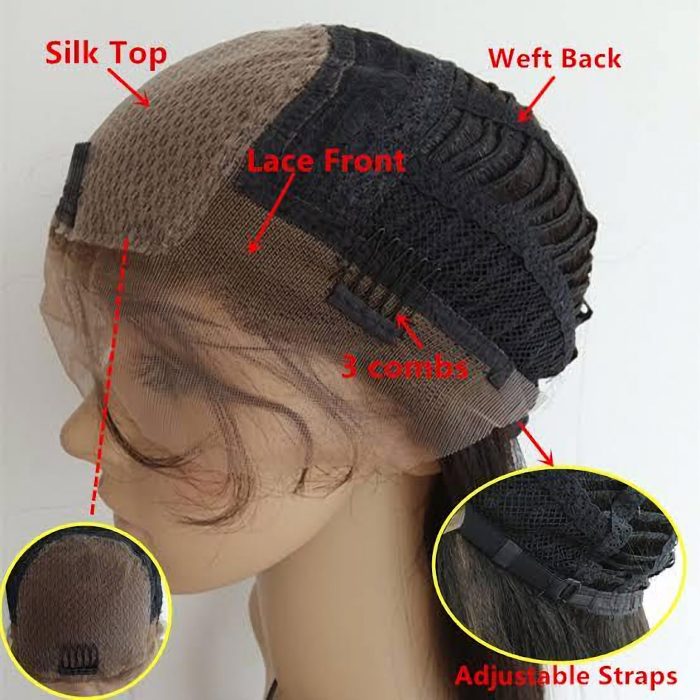Wash a Human Hair Weave is a comprehensive guide to maintaining your weave’s health and beauty. We’ll explore the intricacies of different washing methods, from gentle hand-washing to specific techniques for various weave types like tape-ins and sew-ins. Learn the importance of proper care, the best products, and how to troubleshoot common issues. This guide will equip you with the knowledge to keep your weave looking fabulous and lasting long!
This detailed guide covers everything from understanding the process of washing different weave types, to maintaining their health and longevity. We’ll delve into specific care requirements for tape-ins, sew-ins, and other styles, including the best shampoos and conditioners. You’ll learn how to prevent common problems like tangling and breakage, and discover the best techniques for styling after washing.
Understanding the Process
Washing a human hair weave requires a delicate touch to maintain its integrity and longevity. Proper washing techniques preserve the weave’s natural oils, prevent damage, and ensure a healthy, vibrant appearance. This guide provides a comprehensive understanding of the process, from selecting the right products to performing the wash itself, tailored for various weave types.Washing a human hair weave is crucial for maintaining its health and appearance.
Proper care prevents tangles, breakage, and premature shedding. By understanding the specific steps and using the appropriate tools, you can maintain the beauty and quality of your weave for an extended period.
Washing Methods for Different Weave Types
Different weave types, such as tape-in, sew-in, and lace front, require specific washing approaches to prevent damage. Understanding these variations is key to maintaining the weave’s integrity.
- Tape-in weaves typically require gentle handling. Avoid harsh scrubbing or excessive pulling during the washing process. The tape itself can be sensitive to strong detergents, so choose a mild shampoo and conditioner.
- Sew-in weaves demand meticulous care. Avoid soaking the entire weave at once. Focus on washing the individual wefts gently, working from root to tip, to prevent stretching or pulling. It’s recommended to use a wide-tooth comb to detangle after washing.
- Lace front weaves are particularly delicate. Avoid scrubbing or twisting the lace front, which could compromise its integrity. Washing this type of weave requires extra care to maintain the natural shape and smoothness of the lace.
Step-by-Step Procedure for Washing a Human Hair Weave
Following a structured procedure ensures a thorough and effective wash. Each step is crucial for maintaining the health and longevity of the weave.
- Preparation: Prepare a clean sink or basin filled with lukewarm water. Ensure the water temperature is not too hot, as extreme temperatures can damage the hair. Gather the necessary tools, including a mild shampoo, conditioner, wide-tooth comb, and a clean towel.
- Sectioning: Divide the weave into manageable sections for easier washing and detangling. Start at the nape of the neck and work your way up, ensuring each section is thoroughly cleaned.
- Washing: Apply a small amount of shampoo to the first section of the weave and gently massage the scalp and hair, avoiding excessive rubbing. Rinse thoroughly with lukewarm water until all shampoo residue is gone. Repeat this step for each section, ensuring even distribution of shampoo and rinsing.
- Conditioning: Apply a generous amount of conditioner to the hair and leave it on for a few minutes, allowing the conditioner to penetrate and moisturize the hair. Focus on the ends of the hair, which are often drier than the roots.
- Rinsing: Rinse the conditioner thoroughly, making sure to remove all traces of product. Avoid scrubbing the hair too aggressively, which could lead to breakage.
- Detangling: Gently detangle the weave using a wide-tooth comb, starting from the ends and working your way up to the roots. This prevents tangles and breakage. Avoid using a brush, as this can cause damage.
- Drying: Gently blot the weave with a clean towel to remove excess water. Avoid rubbing or twisting the weave, which could lead to damage or stretching.
Tools and Supplies for Washing Human Hair Weaves
Selecting the right tools and supplies is vital for a successful and damage-free washing experience. Choosing the appropriate items helps maintain the quality and longevity of the weave.
- Shampoo: A sulfate-free, mild shampoo specifically formulated for human hair weaves is recommended. Avoid harsh shampoos that strip natural oils.
- Conditioner: A moisturizing conditioner is essential for keeping the weave soft and manageable. Choose a conditioner that’s designed for human hair and is free of harsh chemicals.
- Wide-tooth comb: This is a crucial tool for detangling the weave without causing damage. A wide-tooth comb is gentle on the hair and helps prevent breakage.
- Clean towel: A soft, clean towel is needed to blot excess water from the weave. Avoid harsh towels that can cause friction and damage.
- Basin or sink: A basin or sink is necessary for washing the weave. Ensure the basin is large enough to accommodate the weave.
Comparison of Shampoos and Conditioners
Different shampoos and conditioners cater to varying hair needs. Selecting the right product ensures optimal care and maintenance for your human hair weave.
| Product Type | Benefits | Drawbacks |
|---|---|---|
| Sulfate-free shampoo | Gentle on hair, doesn’t strip natural oils, preserves moisture. | May not be as effective at removing product buildup from styling products. |
| Moisturizing conditioner | Provides essential hydration and softness, prevents dryness and breakage. | May weigh down hair if not rinsed thoroughly. |
| Deep conditioner | Intensive hydration and repair for dry or damaged hair. | May be too heavy for daily use. |
Maintaining Weave Health
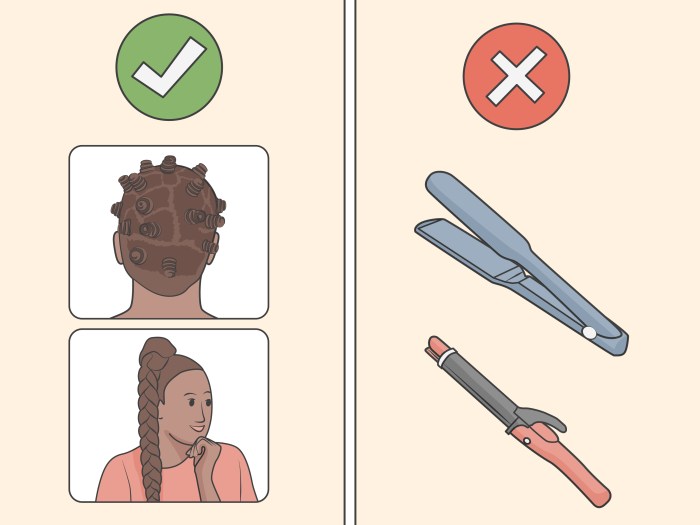
Proper care is crucial for extending the lifespan and preserving the beauty of a human hair weave. Just like natural hair, weaves require consistent attention to detail to maintain their health and prevent damage. Ignoring proper washing techniques can lead to premature wear and tear, significantly reducing the overall lifespan of the weave.Weave longevity depends heavily on the techniques used during washing.
Neglecting these details can cause damage that’s difficult to reverse, impacting the overall appearance and feel of the hair. Understanding the right way to wash a weave is paramount to enjoying its full potential and maximizing its lifespan.
Washing Techniques for Weave Longevity
Maintaining a weave’s health and beauty involves meticulous washing practices. Improper washing techniques can lead to significant damage, impacting both the weave’s appearance and its structural integrity. Understanding the specific steps required to wash a weave properly is essential for achieving optimal results and preventing potential damage.
Potential Damage from Improper Washing
Improper washing techniques can result in various forms of damage. These techniques can lead to breakage, tangling, and discoloration, diminishing the weave’s overall health and aesthetic appeal. For example, harsh shampoos or excessive heat can cause the hair to become brittle and prone to breakage. Using inappropriate tools or methods can also result in matting and tangles, which are difficult to undo.
Furthermore, the frequent use of harsh chemicals can lead to color fading, diminishing the original vibrancy and shine of the weave.
Signs of Improper Weave Care
Recognizing signs of improper care is essential for timely intervention. These signs can range from noticeable damage to subtle changes in the weave’s texture and appearance. A weave that is consistently dry, brittle, or exhibiting signs of breakage may indicate improper washing or handling. Frequent tangling and matting are also significant indicators of a lack of proper care.
If the weave is visibly dull, faded, or showing signs of damage, it’s a clear signal that the care routine needs adjustment.
Precautions When Washing a Weave
Implementing the right precautions during washing is crucial to maintain the weave’s integrity and health. These precautions ensure that the weave is not exposed to damaging elements or techniques. Using a sulfate-free shampoo is recommended to avoid stripping natural oils from the weave. Gentle handling and avoiding excessive heat are also critical to prevent breakage and damage.
Preventing Matting and Tangling
Preventing matting and tangling during and after washing is vital for maintaining a healthy and manageable weave. Before washing, detangle the weave thoroughly to minimize tangles. While washing, use a wide-tooth comb to carefully detangle the weave. Once the weave is clean, gently apply conditioner, focusing on the areas prone to tangling. After washing, ensure the weave is completely dried to prevent moisture buildup and tangling.
Using a microfiber towel can be helpful to absorb excess water without causing friction. A gentle detangling process after drying is crucial to avoid tangles.
Different Weave Types
Human hair weaves offer a diverse range of styles and aesthetics, but each type demands specific care to maintain their longevity and health. Understanding the unique characteristics of different weave types allows for tailored washing and maintenance routines, preventing damage and ensuring a beautiful, long-lasting result.
Care Requirements for Different Weave Types
Different human hair weave types require varied washing techniques. The methods and products used significantly impact the longevity and appearance of the weave. Factors like the bonding method, the hair’s texture, and the overall construction influence the best approach to washing.
Washing Procedures for Various Weave Types
Washing human hair weaves involves a delicate approach. Aggressive scrubbing or harsh chemicals can damage the hair or loosen the bonding, potentially leading to premature wear and tear. The choice of washing method depends critically on the specific weave type.
Comparison of Washing Methods for Different Weave Types
| Weave Type | Washing Method | Specifics | Potential Issues |
|---|---|---|---|
| Tape-in | Gentle Hand Washing | Avoid harsh scrubbing, use lukewarm water, and gently detangle the hair before washing. Apply shampoo directly to the hair, avoiding the scalp. | Can loosen tape if not handled carefully. Using hot water or vigorous scrubbing can cause the tape to detach. |
| Sew-in | Gentle Hand Washing | Focus on the hair, avoid the scalp, and use a wide-toothed comb to detangle before washing. Apply shampoo directly to the hair, avoiding the scalp and the stitching area. | Can loosen stitching if not careful. Avoid harsh scrubbing or using a brush, as it can damage the stitching. |
| Lace Front | Gentle Hand Washing | Thoroughly detangle the hair before washing. Apply shampoo to the hair and gently massage. Rinse thoroughly. Use a moisturizing conditioner, concentrating on the ends. | Over-washing can dry out the hair. Using harsh chemicals or brushes can damage the lace front. |
| Glue-in | Gentle Hand Washing | Use lukewarm water, and apply shampoo directly to the hair, avoiding the scalp and glue areas. Gently massage the hair. Avoid harsh scrubbing and drying methods that can loosen the glue. | Improper washing can loosen the glue. Over-washing can cause the glue to become brittle. |
Best Shampoos and Conditioners for Weave Types
Selecting appropriate shampoos and conditioners is crucial for maintaining the health and shine of human hair weaves. The key is to find products formulated for natural hair, that are free of harsh chemicals, and that provide moisture without weighing the hair down. Look for moisturizing formulas that cater to the specific weave type and hair texture.
Product Recommendations for Different Weave Types
For tape-in weaves, a sulfate-free shampoo and a deep conditioner are ideal. This helps maintain the tape’s adhesion and prevent the hair from becoming dry. For sew-in weaves, use a detangling shampoo and a moisturizing conditioner to prevent knots and maintain the weave’s integrity. Similarly, for lace front and glue-in weaves, select shampoos and conditioners that minimize dryness and maintain the integrity of the hair.
Avoid products containing alcohol, as these can dry out the hair and damage the weave.
Product Recommendations
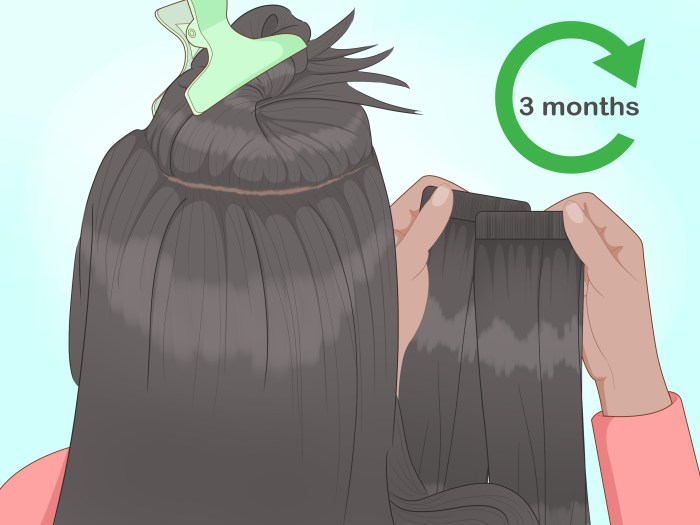
Choosing the right shampoos and conditioners is crucial for maintaining the health and longevity of your human hair weave. Proper products prevent breakage, dryness, and tangles, ensuring your weave looks its best and lasts longer. A well-maintained weave is a testament to the care and attention you put into your appearance.Knowing your hair type and any specific concerns (like dryness, protein damage, or color-treated hair) is key to selecting the right products.
This guide provides recommendations tailored to various needs, helping you make informed decisions about your hair care routine.
Shampoo Recommendations
A good shampoo is designed to cleanse without stripping away essential oils, which are crucial for maintaining the health of your hair weave. Look for sulfate-free options whenever possible. Sulfates can be harsh, leading to dryness and damage, especially for weaves. A shampoo that’s specifically formulated for color-treated hair will also help maintain the vibrancy of your weave.
- Sulfate-Free Shampoos: These shampoos are gentler on the hair and scalp, preventing dryness and promoting healthier hair growth. They effectively cleanse without stripping away the natural oils, preserving the weave’s health. Brands like Olaplex, Kérastase, and Redken offer excellent sulfate-free options.
- Shampoos for Color-Treated Hair: If your weave has been colored, a specialized shampoo will help maintain its vibrancy and prevent fading. These shampoos are formulated with ingredients that protect and nourish the hair, while also providing gentle cleansing. Look for shampoos with color-safe ingredients to preserve the color.
- Shampoos for Dry or Damaged Hair: For weaves prone to dryness or damage, choose shampoos formulated with moisturizing ingredients. These shampoos often include humectants, like glycerin, to help retain moisture and repair damaged areas. Look for products that contain nourishing oils or proteins.
Conditioner Recommendations
Conditioners are essential for detangling and adding moisture to human hair weaves. They help to replenish lost moisture, leaving the weave smooth, manageable, and healthy. Choosing the right conditioner is as important as selecting the correct shampoo.
Washing a human hair weave can be tricky, but proper care is key. Imagine the sheer chaos if, during the process, a sudden drone attack disrupted a concert, like the one that happened to Bone Thugs-n-Harmony, drone hits bone thugs n harmony mid performance. Thankfully, this doesn’t usually happen when you’re washing your weave, so just focus on the gentle shampoo and conditioner, and you’ll be good to go!
- Deep Conditioners: These conditioners are designed for intensive moisture treatments. They are ideal for weaves that are particularly dry or damaged, providing deep hydration and repair. Apply a deep conditioner once a week or as needed, and leave it on for an extended period to maximize its effectiveness. Look for conditioners with ingredients like shea butter, argan oil, or coconut oil.
- Leave-in Conditioners: Leave-in conditioners provide ongoing hydration and detangling. They are beneficial for weaves that require extra moisture or are prone to tangles. Applying a leave-in conditioner after washing helps to seal in moisture and make the weave easier to manage. Many leave-in conditioners also offer styling benefits.
- Conditioners for Specific Hair Types: Choose conditioners that match your weave’s specific needs. If your weave is prone to dryness, look for moisturizing conditioners. If it’s color-treated, opt for color-safe conditioners. Consider using conditioners that are specifically formulated for weaves, providing the extra care and nourishment they require.
Product Recommendation Table, Wash a Human Hair Weave
| Hair Type | Shampoo Recommendation | Conditioner Recommendation | Specific Benefit |
|---|---|---|---|
| Dry/Damaged | Olaplex No. 4 Bond Maintenance Shampoo | Kérastase Elixir Ultime Masque | Deep hydration and repair for dry, damaged weaves. |
| Color-Treated | Redken All Soft Shampoo | Redken All Soft Conditioner | Maintains vibrancy and protects color-treated weaves. |
| Normal | Matrix Biolage Volume Bloom Shampoo | Matrix Biolage Volume Bloom Conditioner | Gentle cleansing and volume enhancement for normal weaves. |
Troubleshooting and Common Issues
Washing a human hair weave can be a rewarding experience, but it’s crucial to understand potential problems and how to address them. Knowing the causes and solutions for common issues will help maintain the health and longevity of your weave, minimizing tangles, breakage, and shedding. This section provides practical strategies for troubleshooting various problems that may arise during the washing process.Common problems with human hair weaves often stem from improper care and handling.
By understanding the root causes and employing effective solutions, you can significantly improve the overall condition and appearance of your weave. This includes recognizing the signs of potential damage and implementing preventive measures.
Tangling
Tangling is a frequent concern with human hair weaves, often due to insufficient detangling or the use of harsh products. This issue can lead to breakage and matting, requiring meticulous attention. Proper detangling techniques are crucial for maintaining a healthy weave.
- Causes of Tangling: Insufficient detangling before washing, using too much conditioner, leaving the weave wet for extended periods, improper combing techniques, and using the wrong type of brush can all contribute to tangles.
- Solutions for Tangling: Thoroughly detangle the weave before and after washing with a wide-tooth comb. Use a gentle, moisturizing conditioner and avoid leaving the weave excessively wet. Opt for a detangling brush designed for human hair weaves, and avoid using metal-tined brushes.
- Preventive Measures: Establish a regular detangling routine, ideally before every wash, to prevent knots and tangles. Use a leave-in conditioner to keep the hair moisturized and manageable. Avoid aggressive brushing or combing when the weave is wet.
Breakage
Hair breakage is another common issue, resulting from improper handling and washing techniques. Understanding the causes of breakage is key to preventing further damage and ensuring the weave’s longevity.
Washing a human hair weave can be tricky, but proper care is key. You want to make sure you’re not using harsh chemicals, and you definitely want to be mindful of how you’re handling it. It’s a bit like crafting a delicate work of art, really. You might find some inspiration for organizing your weave supplies by checking out how to make a Lazy Susan.
Make a Lazy Susan to create a stylish and functional storage solution. This way, you’ll have everything you need within easy reach, keeping your hair weave care routine smooth and efficient.
- Causes of Breakage: Excessive pulling, tugging, or brushing, especially when the weave is wet, can lead to breakage. Using harsh shampoos or conditioners, over-washing, and drying the weave with high heat can also contribute to breakage.
- Solutions for Breakage: Gently handle the weave, especially when wet. Use a wide-tooth comb for detangling and avoid aggressive brushing or combing. Opt for sulfate-free shampoos and conditioners. Avoid using high heat during the drying process.
- Preventive Measures: Invest in a good quality wide-tooth comb or detangling brush. Consider using a microfiber towel to absorb excess water and avoid harsh rubbing.
Shedding
Shedding, though a natural occurrence, can be exacerbated by improper washing techniques. Minimizing shedding is possible with the right approach to washing.
- Causes of Shedding: Over-washing, harsh chemicals, and using the wrong products can lead to increased shedding. Poor quality weave materials and excessive manipulation can also contribute to the problem.
- Solutions for Shedding: Wash the weave less frequently to avoid excessive stress on the hair. Choose sulfate-free shampoos and conditioners, and avoid products containing harsh chemicals. Gently handle the weave and avoid harsh brushing.
- Preventive Measures: Use a good quality human hair weave and consider a gentle, moisturizing shampoo specifically formulated for human hair weaves.
Damaged Weave
A damaged weave can result from various factors, including improper washing, excessive heat, or rough handling. Addressing damage promptly is vital for maintaining the health and longevity of the weave.
- Addressing Damaged Weave: If your weave becomes damaged, carefully assess the extent of the damage. If the damage is minor, consider using a deep conditioning treatment to repair the hair. If the damage is severe, consider getting professional help.
- Troubleshooting Damaged Weaves: For minor damage, try a deep conditioning treatment with nourishing oils and moisturizers. If the damage is severe, professional intervention is necessary to assess the situation and determine the best course of action. Consulting a hair specialist is advisable in such cases.
Styling After Washing
Washing your human hair weave is just the first step; proper styling is crucial for maintaining its shape, health, and longevity. A well-maintained style not only enhances the look but also protects the weave from damage and ensures it lasts longer. Different styling techniques and products are needed to complement various weave types, ensuring each style complements its particular texture.Proper styling after washing is essential for maintaining the integrity of the weave and preventing tangles, breakage, and damage.
It also helps retain the shape and style you’ve meticulously crafted, enhancing the weave’s overall appearance and lifespan. Different styling methods work best with different weave types and hair textures, so understanding these distinctions is key.
Washing a human hair weave can be tricky, but proper care is key. Just like you’d meticulously clean a hamster’s cage, as detailed in Care for Winter White Dwarf Hamsters , you need a gentle touch and the right products. Following a specific routine is important to maintain its integrity and beauty, just as with a healthy hamster environment.
Best Styling Techniques
Styling a washed weave involves a delicate balance of techniques to maintain its shape and health. The key is to work with the weave’s natural texture and characteristics, rather than against them. Using appropriate products is also vital for achieving and maintaining a desirable style. For example, if the weave is prone to tangles, you might need to focus on detangling techniques and products that help keep it smooth.
Styling Products for Washed Weaves
Several styling products can enhance the look and feel of a washed weave. These products can aid in achieving desired styles, such as volume, definition, or smoothness, while also providing essential conditioning and protection.
- Heat protectants: These are crucial when using heat styling tools like flat irons or curling irons, safeguarding the weave from heat damage.
- Leave-in conditioners: These moisturize and detangle the weave, promoting smoothness and manageability. They are particularly important for weaves that are prone to dryness or tangling.
- Styling creams or gels: These products provide hold and definition to various styles, ensuring the weave retains its shape.
- Hair oils: These can add shine, moisture, and protection to the weave, especially beneficial for dry or damaged weaves. Ensure to use a small amount to avoid weighing the hair down.
Suitability of Styling Methods for Different Weave Types
The appropriate styling method depends significantly on the type of weave. Some weaves may respond better to certain styles than others.
| Weave Type | Styling Method | Product Recommendation | Suitability |
|---|---|---|---|
| Virgin Remy Human Hair Weave | Gentle brushing, braiding, or styling with heat tools | Heat protectant spray, styling creams, and gels | Excellent for most styles, but avoid harsh treatments. |
| Synthetic Weave | Gentle detangling and styling with heat tools (using caution), braiding | Heat protectant spray, light hold gels | Suitable for most styles but heat styling may require more caution due to material properties. |
| Pre-styled Weave | Gentle detangling, minimal styling | Leave-in conditioners, light hold gels | Requires minimal styling as the style is already pre-set. |
Maintaining the Style After Washing
Proper maintenance is crucial to ensure your styled weave lasts. Frequent brushing, using appropriate products, and gentle handling contribute significantly to the longevity and quality of your style. Regular checks for tangles or dryness, and prompt addressing of any issues, are essential. Avoid using harsh products or styling methods that may damage the weave.
Washing at Home vs. Professional Salon
Washing a human hair weave is a delicate process that requires careful consideration. Choosing between home washing and professional salon washing hinges on several factors, including your budget, time constraints, and the desired level of care. Understanding the pros and cons of each approach can help you make an informed decision.A well-maintained weave enhances your look and prolongs the life of your investment.
Different methods cater to various needs and preferences. The key is to weigh the advantages and disadvantages to select the most suitable option.
Home Washing Advantages and Disadvantages
Home washing offers a convenient and cost-effective solution. It allows you to manage your hair weave schedule around your daily routine. The ease of access and control over the process are significant benefits.
- Cost-effective: Home washing significantly reduces expenses compared to salon services.
- Convenience: You can wash your weave at your convenience, fitting it into your daily schedule.
- Accessibility: You can wash your weave at home without needing to schedule an appointment.
However, there are potential downsides. Lack of professional expertise might lead to damage. Improper techniques can compromise the weave’s longevity.
- Potential for damage: Incorrect techniques or harsh products can lead to breakage, tangles, and damage.
- Limited expertise: Washing a weave requires specialized knowledge and care, which might be lacking at home.
- Weave maintenance challenges: Home washing might not address complex maintenance issues that a professional can quickly identify and resolve.
Professional Salon Washing Advantages and Disadvantages
Professional salon washing offers expertise and minimizes the risk of damage. Stylists have the knowledge and tools to maintain the weave’s integrity and health. However, this comes at a cost.
- Expertise: Trained stylists have the knowledge and skills to handle various weave types and conditions effectively.
- Reduced risk of damage: Professional tools and techniques minimize the chance of breakage or damage to the weave.
- Detailed maintenance: Stylists can provide thorough cleaning and maintenance, including addressing specific issues.
The drawbacks include cost and time constraints. Salon appointments require scheduling and may not always be convenient.
- Cost: Professional salon washing is often more expensive than home washing.
- Time commitment: Scheduling appointments and waiting times can consume valuable time.
- Limited accessibility: Finding a salon specializing in weave washing might require more effort.
When Professional Salon Washing is Recommended
Professional salon washing is highly recommended in specific situations. This approach is crucial for complex weaves or when you’re unsure about proper techniques.
- Complex weaves: Intricate or layered weaves might require professional handling to avoid tangles and damage.
- Weave issues: If your weave has issues such as knots, tangles, or noticeable damage, a professional should address them.
- Lack of experience: If you lack experience washing weaves, a professional can guide you and prevent damage.
- High-quality maintenance: Maintaining the quality of expensive or intricate weaves is best left to trained professionals.
Comparison Table
| Method | Pros | Cons |
|---|---|---|
| Home Washing | Cost-effective, convenient, accessible | Potential for damage, limited expertise, challenging maintenance |
| Professional Salon | Expertise, reduced risk of damage, detailed maintenance | Costly, time-consuming, limited accessibility |
Last Recap: Wash A Human Hair Weave
Washing a human hair weave effectively involves understanding the unique needs of each type and taking the necessary precautions to maintain its health and longevity. This guide offers a comprehensive overview of the process, providing clear steps, product recommendations, and troubleshooting tips to ensure your weave looks its best. Whether you’re a beginner or a seasoned weave wearer, this guide provides the knowledge and tools to keep your weave healthy and vibrant.
